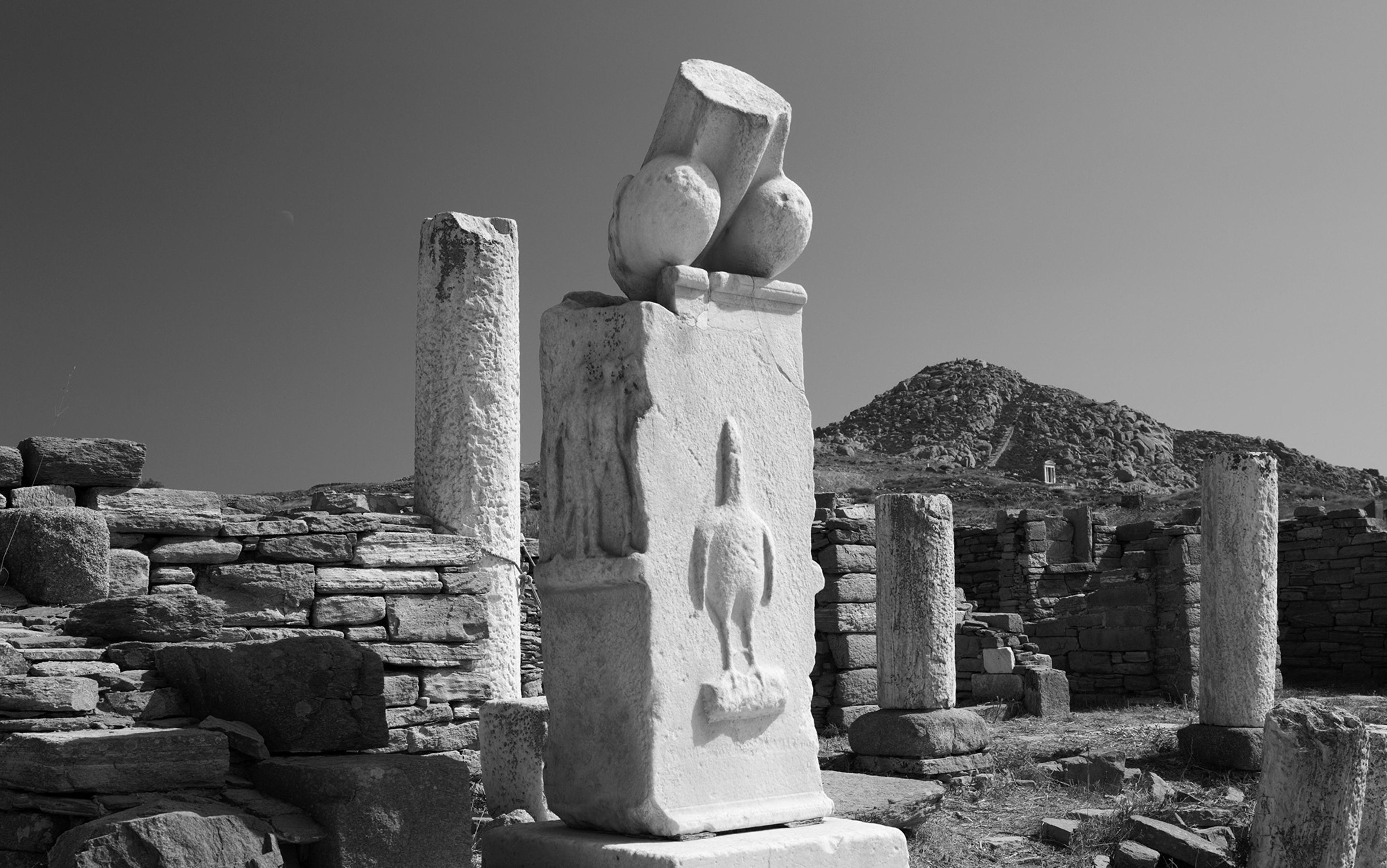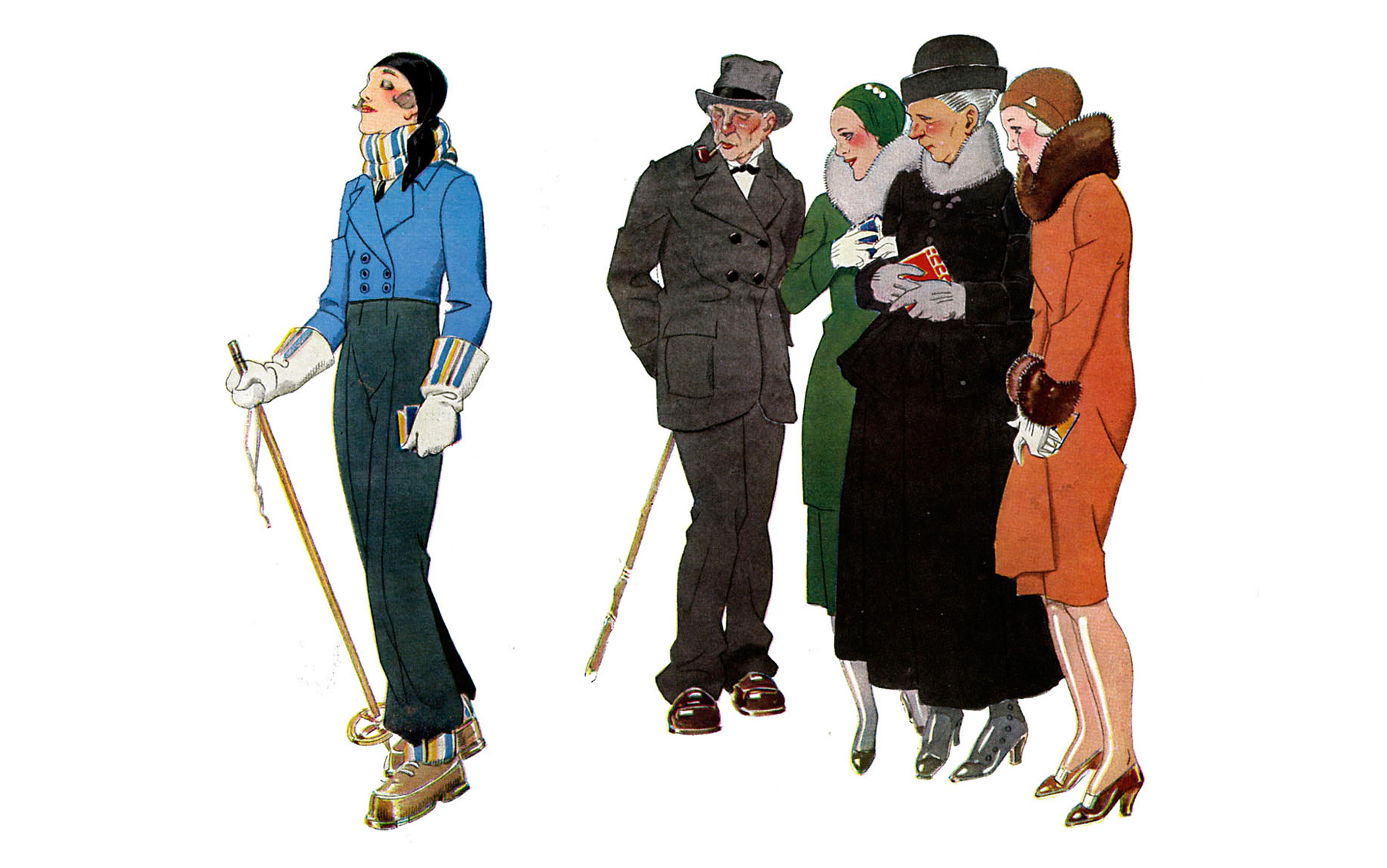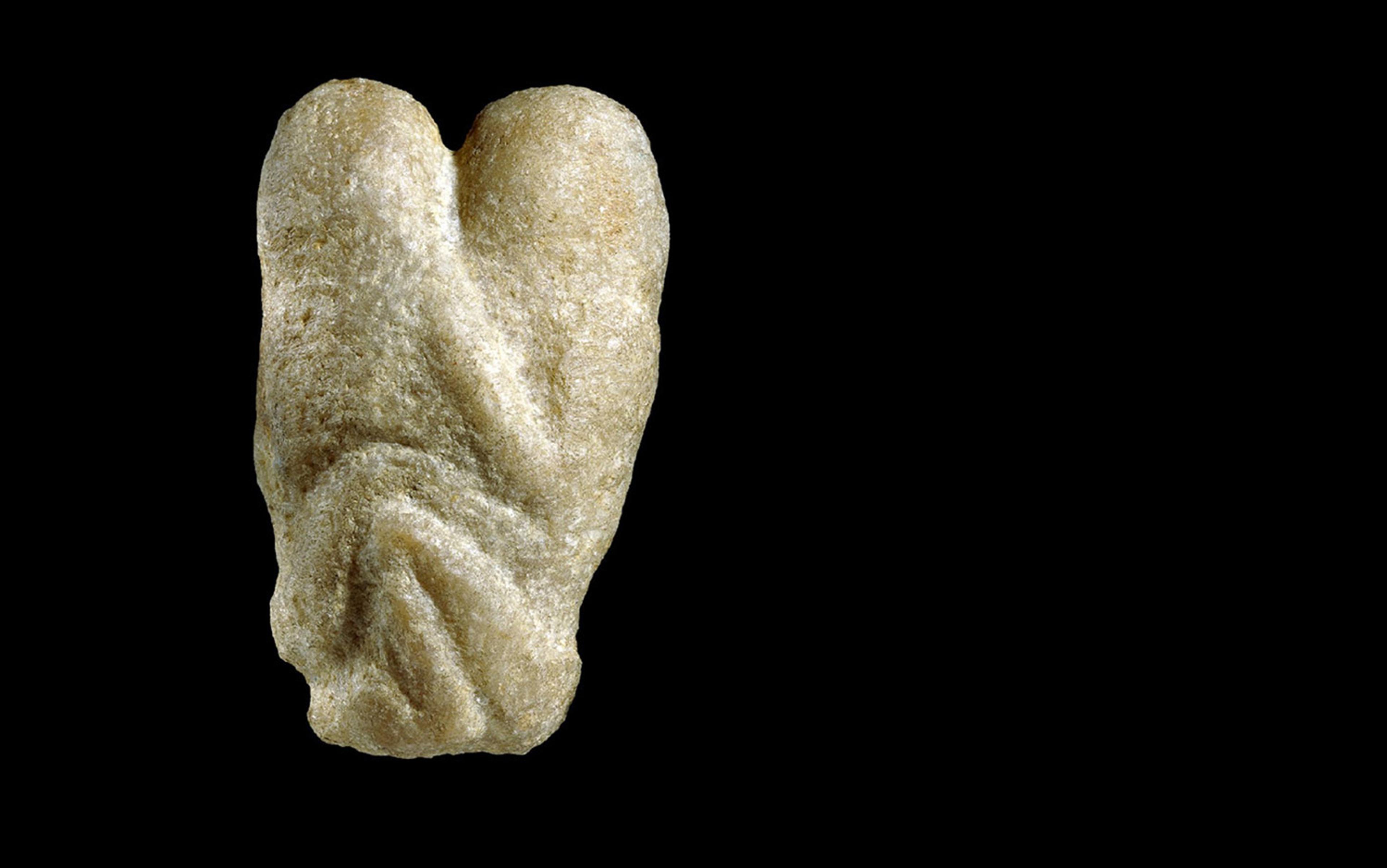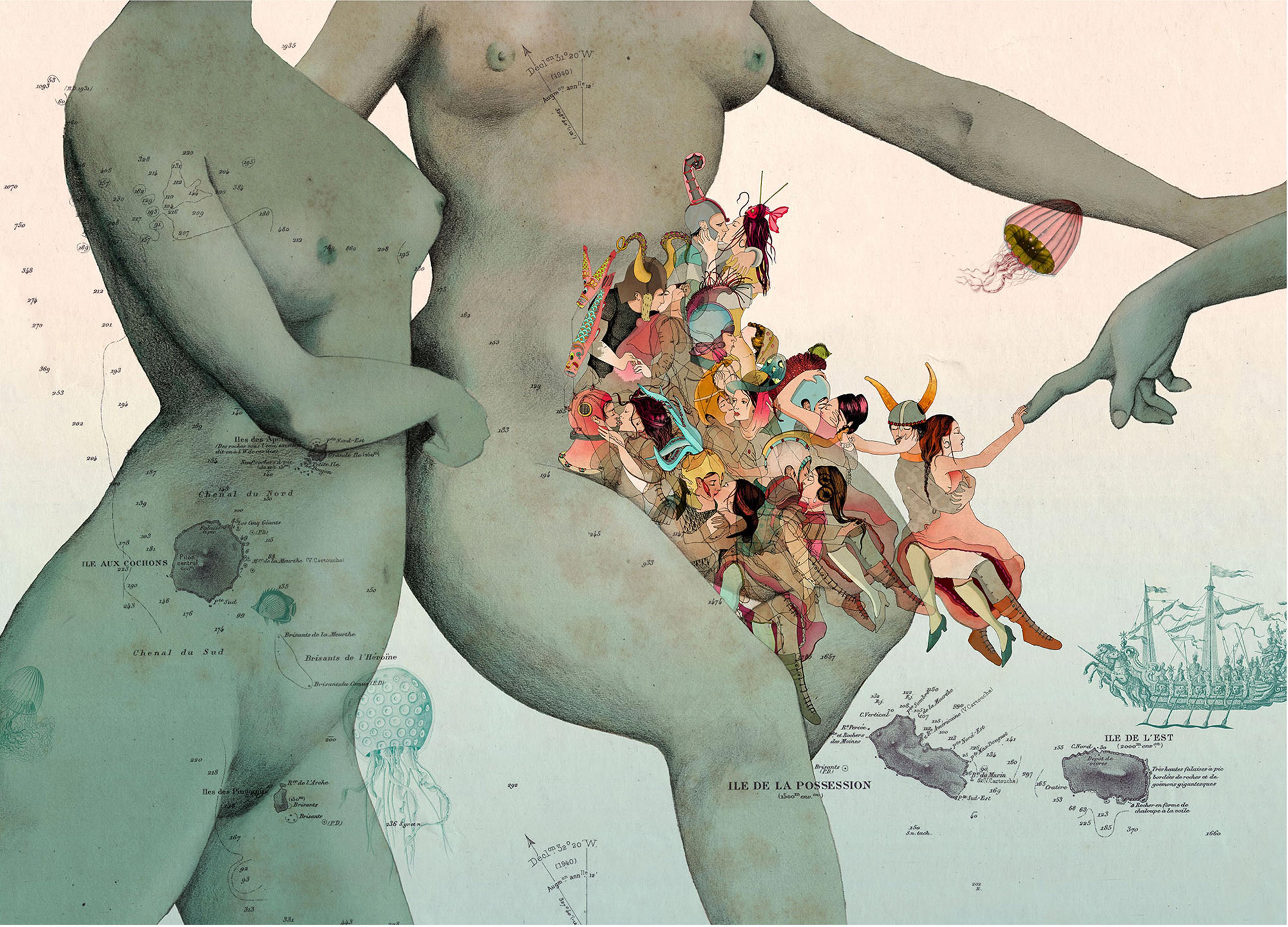Around 2,400 years ago, Aristotle produced groundbreaking science on ‘generation’ or reproduction. Some of his claims about animals and humans are startling: elephants prefer lonely places to copulate; fish lack testicles; males are conceived when the north wind blows. His findings are set out in the Generation of Animals, a book that crashed meteor-like into the classical world. I love this study for its joy in nature – and for the picture it conjures of the philosopher hiding in a bush, watching hedgehogs copulate ‘belly to belly’. Yet it has a dark side. Its science is set within a complex philosophy of generation, one that assumes men are better than women. While detailing how humans develop in the womb, Aristotle explains why women are inferior, rationalising sexism. Unsurprisingly, this tangling of science and sexism led to problems.
Aristotle’s work drew on two sources. One was even older theories of reproduction. How, sages asked, do humans make more humans? First, people do not reproduce by themselves. Women do not spontaneously become pregnant – instead, conception seemed to require sexual intercourse with male ejaculation. (Ancient Greeks assumed that only men could ejaculate sperm, and only women could become pregnant.) Second, children can resemble their fathers or mothers. To explain these observations, theorists deemed that men and women must each contribute something to the creation of a baby. This explains why people cannot reproduce alone, and why children can resemble either parent.
These ancient theories connected life with moisture and heat, an association that goes back at least to the poets Homer and Hesiod. They describe mortals as warm and wet, the dead as cold and dry. One reason for connecting life with heat is that the Greeks worshipped Apollo, the Sun god. Another is observation: living animals are warm, dead bodies are cold. And living animals bleed, dead bodies don’t. (One philosopher, Anaximander of Miletus, associated life with wetness so strongly he claimed humans must have emerged from fish.) Ancient philosophers and poets also used ideas about opposites. North, south. Mountains, valleys. Angels, demons. Aristotle describes a Table of Opposites created by Pythagorean philosophers, which included the following pairs:
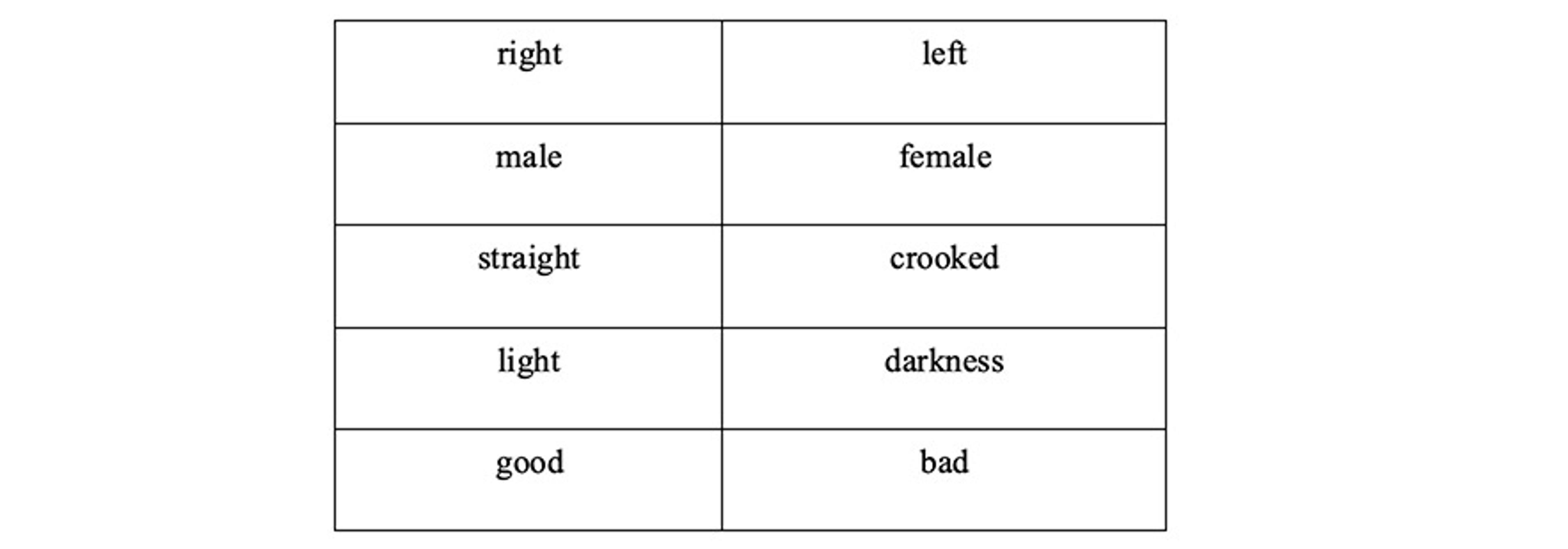
As you would expect, right is opposite left. Light is opposite darkness. However, the items in each column are also connected with one another, creating two constellations of ideas. Right-male-straight-light: good. Left-female-crooked-darkness: bad.
In the 5th century BCE, Parmenides claims that men and women both produce ‘seed’ – the reproductive, magic stuff of generation. In this sense, today we know that men and women both possess ‘seed’: sperm and eggs. For Parmenides, conception occurs when people ‘mix the seeds of Love’; male embryos are conceived on the right side of the womb, females on the left. Anaxagoras agrees that an embryo’s womb placement determines its sex. However, he rejected the two-seed theory in favour of a one-seed theory: the male provides seed, ‘while the female only provides the place’. Perhaps he pictures male semen as a plant seed, embedded in the ‘earth’ of a woman. A problem for ‘one-seed’ theories is that it’s then difficult to explain how a child could resemble its mother, when their seed derives exclusively from the father.
Legend has it that another ancient philosopher, Empedocles, could control the winds and raise the dead. When not practising these hijinks, he also offered a theory of reproduction. Like Parmenides, Empedocles believed both men and women produce seed. However, he went further in holding that each kind of seed contributes a different part to the offspring. This is impressive – Empedocles seems to have correctly surmised that male and female seed make distinct contributions to a baby. Lest we take him too seriously, though, Empedocles also argued that temperature determines an embryo’s sex: warmer wombs produce males, colder wombs produce females. This explains why men are darker and hairier – or, as one translation puts it, ‘shaggy’.
Aristotle’s other source was scientific observation. You might imagine the man spent all his time in Athens, debating in Plato’s academy, scribbling scrolls, munching figs. Yet after Plato died, Aristotle left Athens to spend 12 years wandering Greece. Records of his movements are hazy but we know he visited the court of Hermias, the ‘tyrant of Atarneus’. He married a woman called Pythia. Afterwards, he moved to Macedonia and tutored Alexander the Great, who would later conquer large chunks of the known world. We’re also confident he spent an extended time fishing on the isle of Lesbos. This fishing matters. Because, unlike his predecessors, Aristotle sought to understand reproduction by studying the natural world. This systematic approach was utterly new. ‘Aristotle,’ writes the scholar James Lennox in the Stanford Encyclopedia of Philosophy, ‘is properly recognised as the originator of the scientific study of life.’
This originator collected masses of data on the natural world, naming more than 500 species, and describing the internal anatomy of 110. He dissected at least 35 kinds of animals. Aristotle taxonomied creatures, studied their parts, wondered at their diets and dwellings and motions. He asks whether sea anemones are plants or animals – as he observes that sponges are rooted like vegetables, yet feed on small fish through a mouth in the middle of their bodies. He tells us that Arabian camels have one hump, whilst Bactrian camels have two, and that all possess ‘four teats like the cow, a tail like that of an ass, and the privy parts of the male are directed backwards’.
Aristotle collected information about pertinent body parts, and the act itself
To gather this information, Aristotle seems to have spent innumerable hours observing animals and talking to people who worked with them. He interrogated beekeepers, fishermen, sponge divers – and perhaps even human midwives. Legend has it that, while conquering large parts of Europe, Alexander aided Aristotle’s scientific quest. As Bertrand Russell tells it, Aristotle wrote Alexander regular letters saying, essentially: ‘Oh fie!’, it’s ‘vulgar to take so much interest in barbarians’. But Alexander replied only by sending him specimens of the flora of the Indus Valley. The writings of Pliny the Elder, a Roman encyclopaedist, may be at the root of this tale:
King Alexander the Great, inflamed with a desire for discovering the natures of animals, entrusted this task to Aristotle … Several thousand men in the whole region of Asia and Greece were put under his command – all those who made their living from hunting, bird catching and fishing as well as those who had in their care animal collections, herds of cattle, beehives, fish-ponds, aviaries. The idea was that nothing anywhere in the world might be overlooked by him.
I really hope this legend is true – although it was likely propaganda to soften Alexander’s murderous image.
Whether aided by Alexander or not, Aristotle was fascinated by the reproduction in animals and humans. He knew that animal conception usually started with sexual intercourse, so he collected information about pertinent body parts, and the act itself. Here are a few of his observations:
- Crows indulge ‘but rarely’ in sexual intercourse.
- The human penis protrudes and recedes ‘in the opposite way’ to that of a cat.
- A man becomes bald only once he has entered upon sexual activity.
- The more powerful a person’s sexual activity is, the quicker they will shed eyelashes.
- The female cat is ‘naturally lecherous’, and ‘wheedles’ the male on to sexual commerce, caterwauling throughout.
- The penis of the male seal is ‘exceptionally large’.
- Octopuses have sex through an ‘interlacing of their tentacles’, uniting at the mouth.
- Pigeons kiss one another just when the male is on the point of mounting the female, ‘and without this preliminary the male would decline to perform his function’.
- And, of course, hedgehogs copulate erect, ‘belly to belly’.
Armed with earlier theories and his scientific observations, Aristotle began crafting his own theory of generation.
Key to this is Aristotle’s account of ‘causes’. He believed that understanding the causes of a thing allows us to understand the thing itself. The material cause of a thing explains what it is made of. For example, bronze is the material cause of a statue. Wood is the material cause of a table. In themselves, bronze and wood are unshaped, unformed. The formal cause explains the ‘form’ or structure of a thing. A silver plate has the form of ‘plate-ness’ but this lump of metal could have had the form of ‘spoon-ness’ or ‘fork-ness’. Similarly, wood could form a table or a chair. The efficient or moving cause explains the agent that brings about something. A sculptor could be the efficient cause of a statue. A kettle could be the efficient cause of hot water.
The material cause of a human being is its anatomical parts: blood, bones, organs. The formal cause of a human is its ‘human-ness’. But, the Generation of Animals asks, what is its efficient cause? What brings about a human? Aristotle knew that animals with two sexes create new animals from the ‘union of male and female’. So, like his predecessors, he acknowledges that males and females each contribute something to conception. But what?
Aristotle assumes that male ejaculate, semen, contains seed. Closely studying semen, he argues it must be a ‘residue’ of a ‘growth nutriment’. On Aristotelian biology, nutriments contribute to a body’s natural, healthy growth. If a body does not use up nutriments, the leftover becomes a residue. Aristotle argues his semen = residue theory explains various ‘facts’. For example, healthy males produce more semen, because sick ones use up more nutriment. Children do not produce semen because they are still growing, using up their nutriment without leftovers. Because nutriment helps bodies gain weight, people and goats who are ‘getting rather too fat’ do not have nutriment leftover – explaining why they produce ‘less semen and are less desirous of sexual intercourse’.
For Aristotle, blood is the most important nutriment, travelling around the body bringing life, growth. He reasons that semen must be a residue of blood. But blood is runny and red whereas (he notes) semen is ‘thick and white’. Why doesn’t semen look more like blood? Aristotle’s answer is that males ‘concoct’ blood residue, thickening and purifying it, turning it into semen. Female bodies do not concoct semen, which is why they regularly lose leftover blood – a nifty explanation for menstruation. Why do only males concoct semen? Because concoction requires heat. And, as on the Table of Opposites, Aristotle connects males-hot, females-cold.
Aristotelian pregnancy is all nautical: wave froth, whirling currents, magically forming fishnets
This brings us to the heart of Aristotle’s theory. He claims that male semen contributes ‘the form and the efficient cause’, while females contribute ‘the material’. Male semen forms the material provided by the female. How does he arrive at this?
One reason to think females provide the material is that, after conception, the new creature grows inside its mother. As Aristotle notes, further material ‘must constantly be added’ to an embryo ‘that it may increase in size’. New creatures grow regardless of what their fathers are doing, so this material must come from their mothers. And if you think females provide the material cause of a new creature, then you had better deny they also provide the efficient cause. If women possessed the material and efficient causes of generation, they could become pregnant without sex – something you didn’t see happening in classical Greece. You’d be offering a one-seed theory on which females possess all the creative fizz, with no need for males. By attributing the efficient cause to males, Aristotle has explained their apparently necessary role in conception. As he writes, ‘the female does not produce offspring by herself, for she needs … something to begin the movement in the embryo’.
Aristotle would also be in a tricky position if he believed males contributed the efficient cause and matter to generation. If that were the case, why can’t males reproduce by themselves? Aristotle actually claims that males contribute no matter at conception. His scientific observations showed that not all male animals emit semen, yet they still reproduce. For example, during mating, some male insects do not insert any parts of themselves into the female, ‘but on the contrary the female inserts a part of herself into the male’. The male hasn’t provided any matter, just ‘heat and power’, and this is sufficient for conception. Aristotle writes that, just as the carpenter is distinct from the timber he shapes, so semen is distinct from the menstrual blood it works on. We can see how he arrived at the notion that males contribute the efficient cause, and women the material.
In addition to heat and power, semen communicates movement to female menstrual blood. A carpenter imparts shape and form to the timber ‘by means of the motion he sets up’. Similarly, semen ‘sets up the movement in the embryo’. I take these movements to be literal. Aristotle describes semen as a compound of breath and water, thick and white because it contains ‘bubbles’. It’s a kind of foam, akin to frothy, sudsy ocean waves. (He notes that ‘Aphrodite’, goddess of love, literally means ‘foam-born’.) We can imagine semen bubbling with air and froth. Inside the mother’s body, this sea-foam starts a movement in the female material. These movements continue – the classicist Sophia Connell argues that, for Aristotle, later motions may even derive from the mother. Slowly, through swirls, eddies and ripples, an egg-like structure containing a tiny creature forms in the womb.
Gradually, the embryo grows, gaining nourishment from its mother ‘as a plant does of the earth’. Its own source of heat, its heart, develops first, followed by other organs and bones. Charmingly, Aristotle compares the embryo’s slow growth to the ‘knitting of a net’. Aristotelian pregnancy is all nautical: wave froth, whirling currents, magically forming fishnets.
There is plenty of sexism in Aristotle. His biological observations showed that some animals, such as bees, reproduce yet do not have separate sexes. (Science has since identified thousands more hermaphroditic species, including fish, molluscs, insects, snails, starfish.) Why, Aristotle wonders, do only some species have males and females? His answer is contentedly prejudiced:
as the first efficient or moving cause, to which belong the definition and the form, is better and more divine in its nature than the material on which it works, it is better that the superior principle should be separated from the inferior. Therefore, wherever it is possible … the male is separated from the female.
Aristotle is saying that the efficient cause is ‘better and more divine’ than the material it shapes. The sculptor is better than the clay. And the superior should be separated from the inferior wherever possible. As males provide the superior efficient cause, and females provide the inferior material cause, many animal species are rightly separated into males and females.
Aristotle didn’t invent sexism – he inherited buckets of it
If you found Aristotle’s account of conception disrespectful to women, just wait. His account of foetal development is even worse. For Aristotle, an embryo becomes male when its body develops perfectly in the womb. However, if a womb is too cold and the embryo poorly nourished, it is not brought to its ‘proper form’. Then, it becomes female. He finds ‘proof’ of this theory via several ‘observations’. One is that young and elderly animals are more likely to produce female offspring: Aristotle explains that young animals have not yet perfected their heat, while the heat of older animals is failing. Further, more females are born when the south wind blows: its moister air leads to more liquid semen, which is harder to properly concoct.
Both male and female animals have their place in the Aristotelian world – both sexes are necessary to create new animals. Yet a female animal is one that has failed to become male. Aristotle tells us we must look upon the female as ‘a sort of natural deficiency’: ‘The female is, as it were, a mutilated male.’
Aristotle didn’t invent sexism – he inherited buckets of it. We’ve already seen the Table of Opposites declaring female: bad. But he may be more prejudiced than some of his predecessors. Plato, for example, occasionally argued for greater equality between men and women. Aristotle’s sexism also manifests beyond his theory of human reproduction. For example, his political writings state that women are weaker than men, more cautious, less courageous. This is true of all female animals, not just humans. He notes that when a trident strikes a female cuttlefish, the male ‘stands by to help’. But, damningly, when the male is struck, ‘the female runs away’. Proof that the females of all species are cowards. As the philosopher Cynthia Freeland puts it, when it comes to women, the horizons of Aristotle’s thought ‘loom dark’.
Aristotle’s theory of reproduction was widely taken up by subsequent theorists, its ideas working their way into the likes of Augustine, Thomas Aquinas, Michel de Montaigne and Jean-Jacques Rousseau. His biology held sway until at least the 17th century. One turning point came in 1651, when the Aristotelian biologist William Harvey reluctantly concluded that Aristotle’s account of reproduction had problems. Another came in 1827, when Karl Ernst von Baer discovered the human ovum. In the wake of such discoveries, Aristotelian theories of reproduction waned but didn’t disappear.
In 1684, a book partly based on Aristotle’s Generation of Animals had gone viral, and went on to be reissued hundreds of times, for centuries. In 1930s England, Aristotle’s Masterpiece was still selling around 10,000 copies annually and many of its ideas, such as the causes for a child becoming male or female, are rooted in the Generation of Animals. Norman Ford’s book When Did I Begin? (1988), a study of human life, opens with the chapter ‘Historical Influence of Aristotle on the Theory of Human Reproduction’.
The problem is that, alongside his theory of reproduction, many thinkers also imbibed his sexism. Aristotle could have better avoided misogyny. To illustrate, he could have held that males provide the efficient cause of conception and females the material, yet both are equally valuable. Various ingredients go into a bread loaf – flour, salt, water – yet we don’t believe that flour is ‘better’ than salt. Instead, Aristotle’s theory of reproduction provided a rationale for sexism. Feminists began calling this out from the 1970s. In one early critique, Maryanne Cline Horowitz argues that Aristotle invented many of the ‘standard’ Western arguments for female inferiority. She claims that Aristotle’s account of reproduction partly explains why the female ovum went ‘unsuspected’ until the 17th century. Horowitz adds that Aristotle probably underlies Sigmund Freud’s view that women have a ‘castration complex’ about not being men. Meanwhile, Nancy Tuana argues that Aristotle’s biology provided ‘rational justification’ for the greater perfection of males.
It was acceptable not to insure things that might happen to the non-standard body, such as pregnancy
Conceiving of men as ‘better’ than women is straightforward sexism. Yet some of Aristotle’s most insidious sexism is more subtle. For him, the male body is the ‘proper form’ of a human being, whereas the female body is akin to ‘a mutilated male’. In other words, the male body is the standard human body. This attitude is still with us today, and it leads to problems.
To illustrate, in 1976 the US Supreme Court ruled it was not discriminatory for private medical insurance to exclude pregnancy and childbirth. Their reasoning was that these insurance policies covered everything that might happen to the ‘standard’ human body – including prostate cancer and circumcision. It was acceptable not to cover things that might happen to the non-standard body, such as pregnancy. Happily, this Supreme Court decision was overturned with the Pregnancy Discrimination Act of 1978, but many examples of this subtle discrimination remain.
Caroline Criado Perez’s book Invisible Women (2019) investigates many of them. She shows, for example, that because the symptoms of men’s heart attacks are taken as ‘textbook’, heart attacks in women are less likely to be diagnosed. Crash-test dummies are regularly built to male proportions, despite the fact women are, on average, shorter and lighter. This contributes to some alarming statistics: when a woman is involved in a car crash, she is 47 per cent more likely than a man to be seriously injured, and 17 per cent more likely to die. Medical trials, on humans and animals, often exclude females – resulting in treatments that are less effective, and have more side-effects, for women.
Beyond the lethal, many irritants remain. Voice-recognition software more accurately recognises male voices. Smartphones are too large for the average female hand, and VR headsets are too large for the average female head. As Simone de Beauvoir proclaimed, women are the second sex. Aristotle is, partly, to blame.
